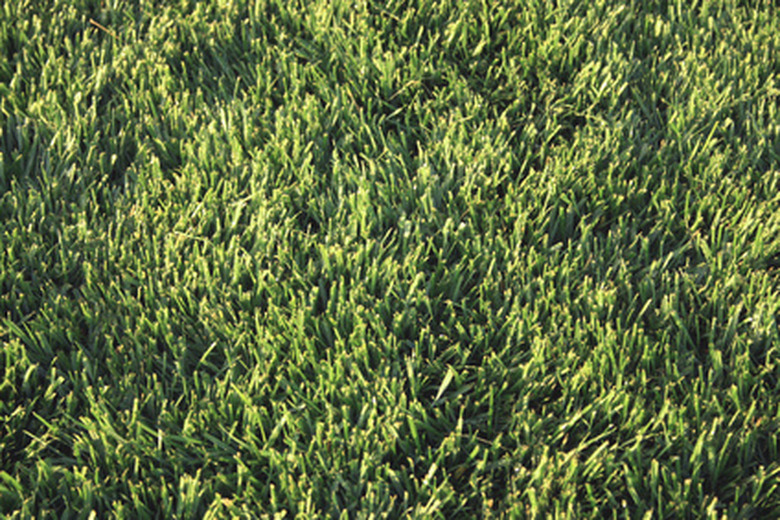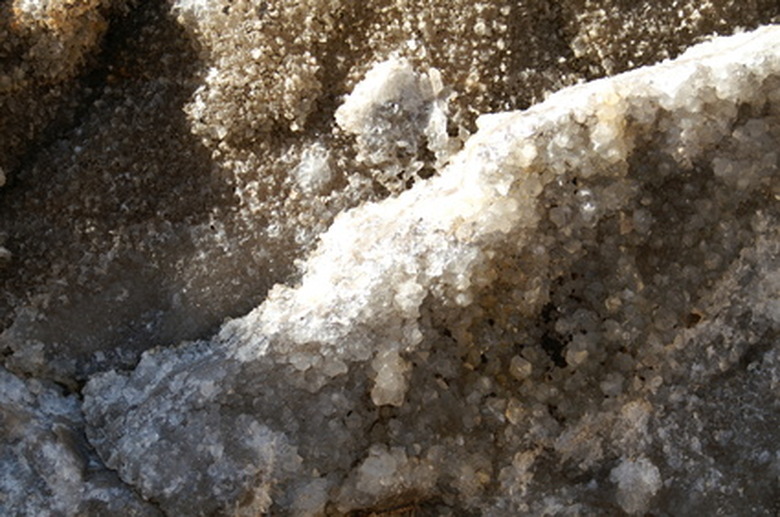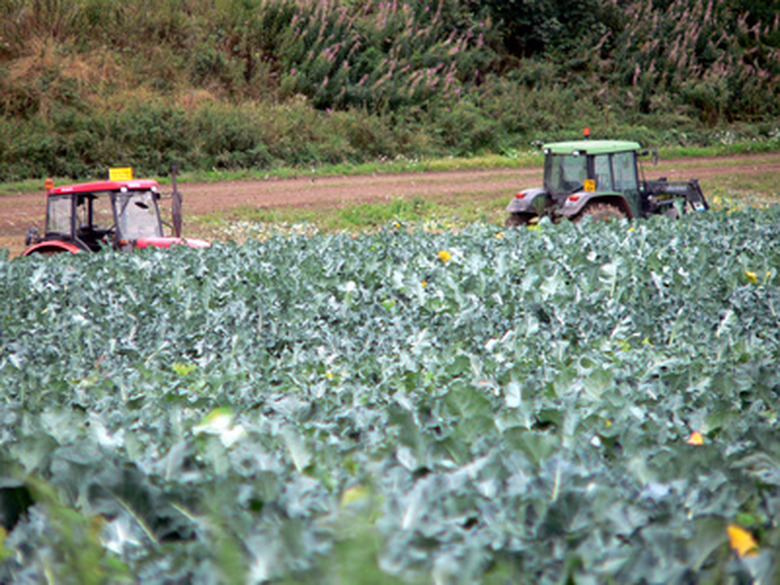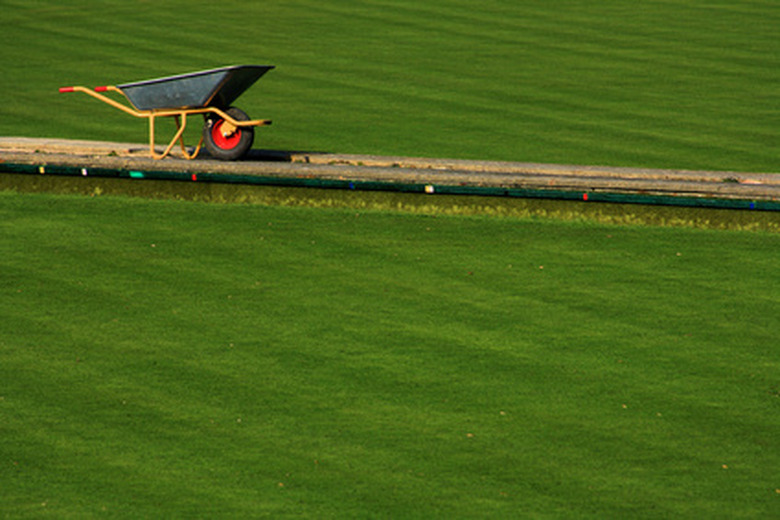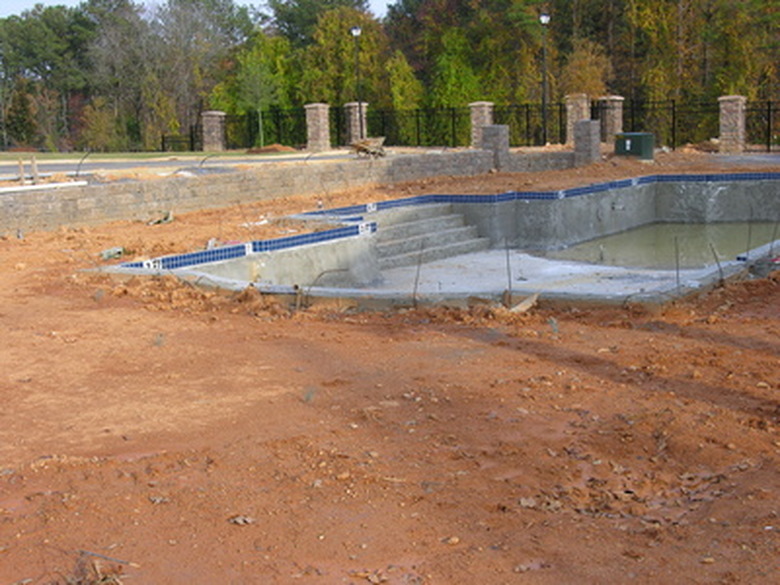Gypsum Uses For Lawns
Gypsum, also known as calcium sulfate, is commonly used to help lawns in addition to fertilizer. When applied to compacted soils, especially those with high clay content, gypsum serves to soften the humus by breaking up and loosening soil structure. Nontoxic and safe to handle, gypsum is not a magic bullet to lawn repair, but part of a multitiered lawn vitalization process that can take years to show results.
Gypsum Uses
A soft mineral, gypsum occurs in nature in a crystal form and found in large masses called selenite or satin spar. Deposits are found in shale beds and are formed as a byproduct of sulfide oxidation. The mineral is mined all over the world with large domestic deposits found in New York, Michigan, Indiana, Texas and California. Well utilized by the manufacturing sector, gypsum is the primary material used in chalk, plaster of Paris, plaster, Sheetrock and as an additive in medicines, tofu and a white form of paint called gesso. The vast majority of gypsum is used as a fertilizer or a lawn amendment.
- Gypsum, also known as calcium sulfate, is commonly used to help lawns in addition to fertilizer.
- Well utilized by the manufacturing sector, gypsum is the primary material used in chalk, plaster of Paris, plaster, Sheetrock and as an additive in medicines, tofu and a white form of paint called gesso.
Gypsum Benefits
The Western Farm Press reports that the benefits of gypsum are numerous. As a fertilizer, it provides both calcium and sulfur, two of the 16 nutrients essential for lawns and plants. Dr. Brent Rouppet, an agriculture consultant and proponent of gypsum application, notes that use of gypsum improves soil structure in compacted solids by combining sand, silt, clay and humus particles together improving air movement. The mineral helps replace harmful salts detrimental to lawn growth, reduces water run off and soil crusting all of which allow for savings in irrigation costs. An inexpensive material, gypsum is natural, organic and convenient to use.
Application
Gypsum does not contain any plant nutrients so it can be applied during the fertilization process and will not cause burning. Application is best achieved using either a drop spreader or a broadcast spreader. The accepted rate of application is 40 pounds per thousand feet. Backyard gardeners should use a granular form of the mineral. Apply the gypsum only once a year (any time is fine) and be sure to water right away. To maximize the effectiveness of the mineral, apply it right after aeration. Gypsum's benefits are slow to be realized and can take as much as three years to show an overall improvement.
- The Western Farm Press reports that the benefits of gypsum are numerous.
- Gypsum does not contain any plant nutrients so it can be applied during the fertilization process and will not cause burning.
Argument Against Gypsum
The Agriculture Center at Louisiana State University contends that the application of gypsum on most soils found in the United States has little effect due in part to the common mixture of native and non-native subsoils. Gypsum has little effect on layered soils that are already loose and uncompacted. The exceptions to this are the arid areas of the western United States and coastal areas where sodium in the soil tends to be high. As an alternative to gypsum, the LSU Agriculture center suggests core aerifying in the spring and summer to reduce soil compaction.
